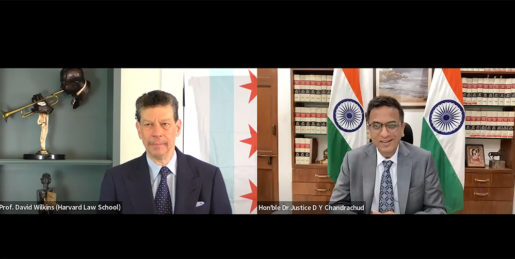In “The Future of Courts,” Richard Susskind poses the question: Is court a place or a service? In light of the COVID-19 pandemic, the recent closure of many physical courts, and the subsequent move to remote court hearings and procedures, Susskind’s question has potentially profound implications. As Susskind and Jonathan Zittrain discuss in this issue’s “Speaker’s Corner,” the answer is likely both.
Leaving conceptual debates aside, moving online has presented courts with a myriad of challenges. One big challenge centers on public access to court procedures. Indeed, in many jurisdictions, a trial’s “public” nature is not a luxury but a right, adding urgency to courts’ ability to provide means of accessing their online proceedings. In other cases, the decision over whether and how to provide public access to a court during the pandemic may rest with the respective judge, who may use their discretion on the appropriateness of public access on a case-by-case basis or to the extent that the requisite technology is available to do so.
But what does public access to virtual courts look like in practice?
The exact approach depends on the court in question, but many have taken to posting livestreams of remote court sessions available to the public—something that was already in progress in many state and federal courts before the pandemic but has been supercharged in the context of COVID-19 adjustments. For example, in response to the closing of courts, the Rhode Island Judiciary established separate YouTube pages to livestream different courts and courtrooms. A similar setup is being used in certain courts in California, Kansas, Washington, and no doubt many other jurisdictions across the country. Michigan courts have gone so far as to create a website that offers an interactive county-by-county map to assist users in accessing the available livestreams for the virtual court they wish to follow. According to Amy Howe on SCOTUSblog, the pandemic has prompted more than half of state supreme courts to hold virtual oral arguments—all but three of which also allow live public access (either audio or video). At the same time, it is important to note that some courts began public livestreaming even before the pandemic. The New Hampshire Supreme Court, for instance, began public-access livestreams in October 2005, joining 20 other state courts, according to the release at the time.
It is unclear whether and to what extent public-access livestreaming will be maintained once courts begin to return to more normal operations.
Publicly accessible livestreams of court proceedings are also being used on the federal level in response to COVID-19. For instance, on April 26, 2020, the U.S. Court of Appeals for the Seventh Circuit posted to its website: “The courtroom will be closed to the public. The Court, on a temporary basis, will live stream the audio from oral arguments to YouTube.” Other U.S. appeals courts have followed suit. According to Howe’s reporting, 12 of the 13 federal courts of appeals have heard oral arguments remotely during the pandemic, with nine of them also allowing public livestreamed access, either video or audio. As with state courts, it is worth noting that some federal appeals courts livestreamed hearings before the pandemic, including the Ninth Circuit, which was the first to launch them in April 2015, and the D.C. Circuit, which launched them in May 2018.
Like so much that has been impacted by the current pandemic, it remains to be seen how these changes will play out over the long term. In particular, it is unclear whether and to what extent public-access livestreaming will be maintained once courts begin to return to more normal operations—after all, the Seventh Circuit’s notice was careful to label its new livestreaming efforts “temporary.” Nevertheless, COVID-19 has undeniably pushed everyone, courts include, to think carefully about the ways reality has shifted and what these changes mean for the path forward. Given that public access to court proceedings was already on the move to online spaces before the COVID-19 crisis, the postpandemic normal is unlikely to resemble the prepandemic status quo. Indeed, the question going forward will center on how today’s crisis informs our postpandemic approach to courts.



